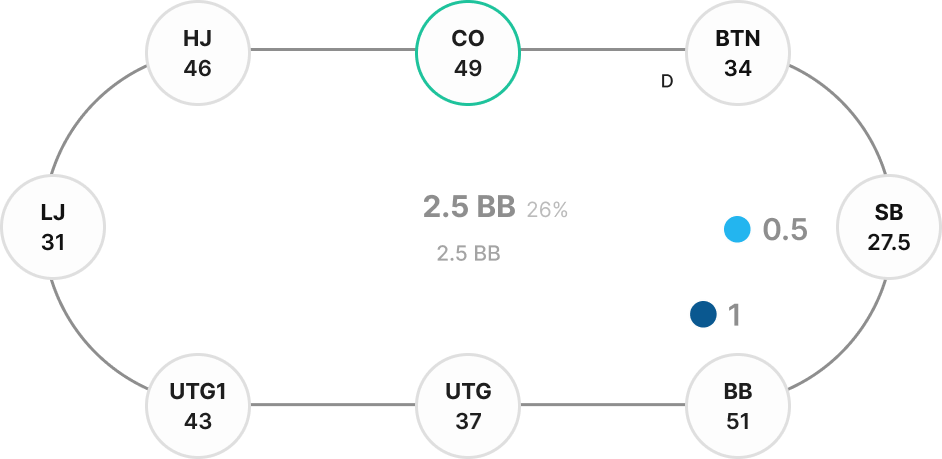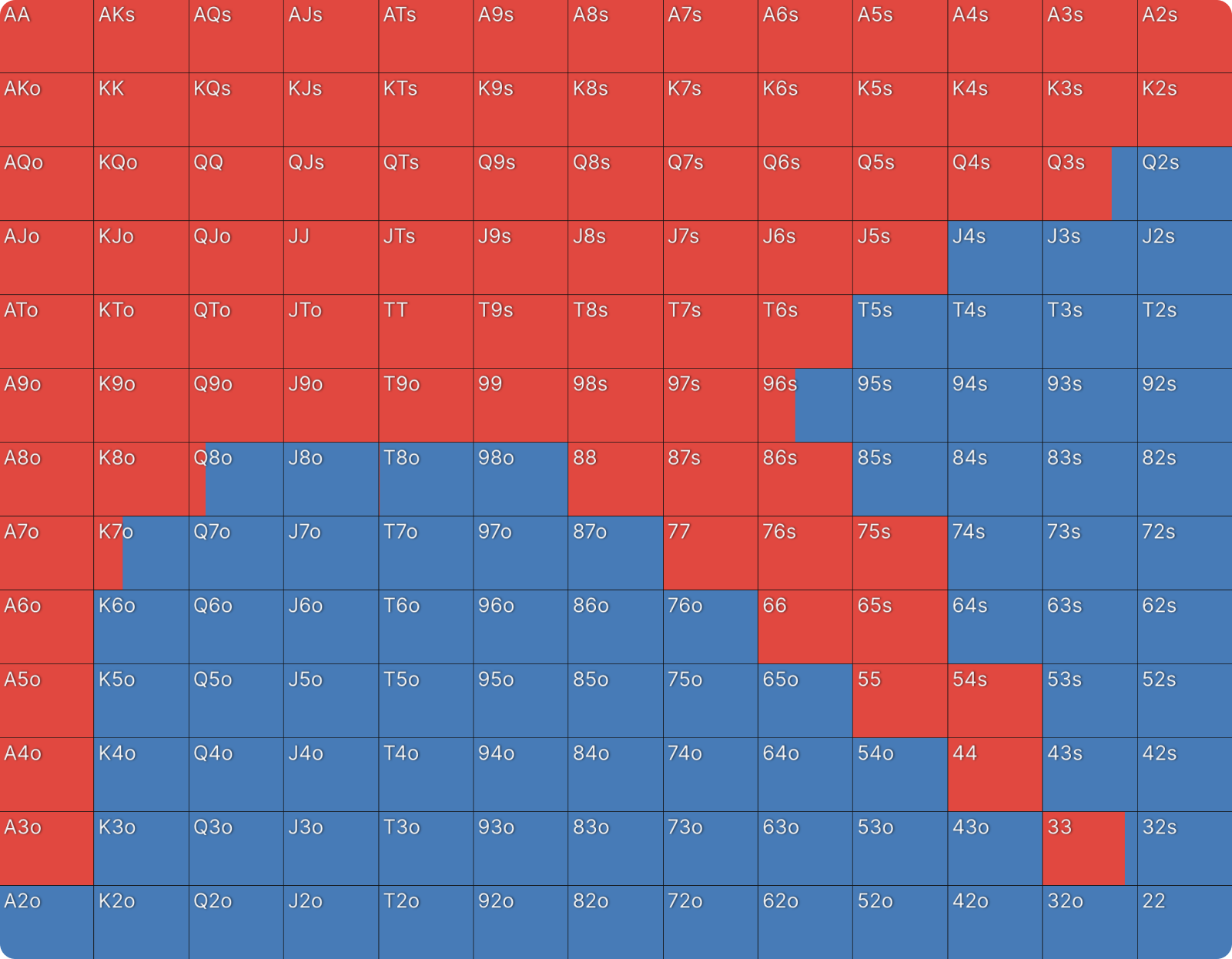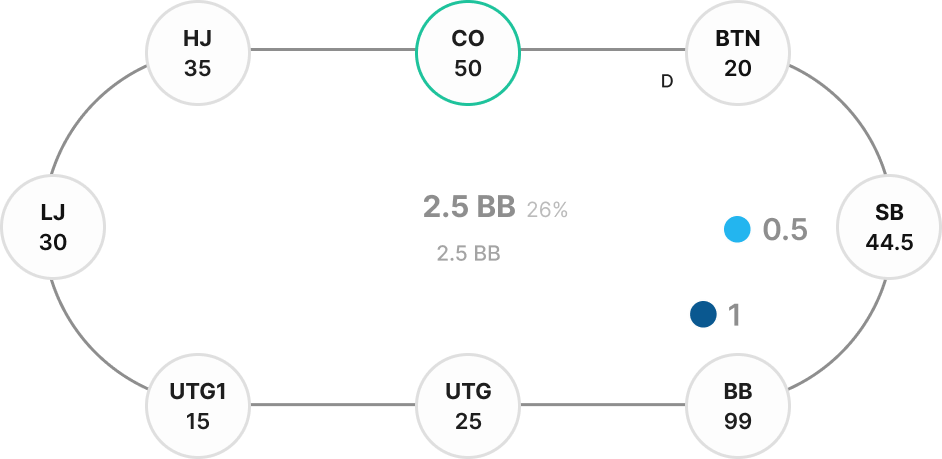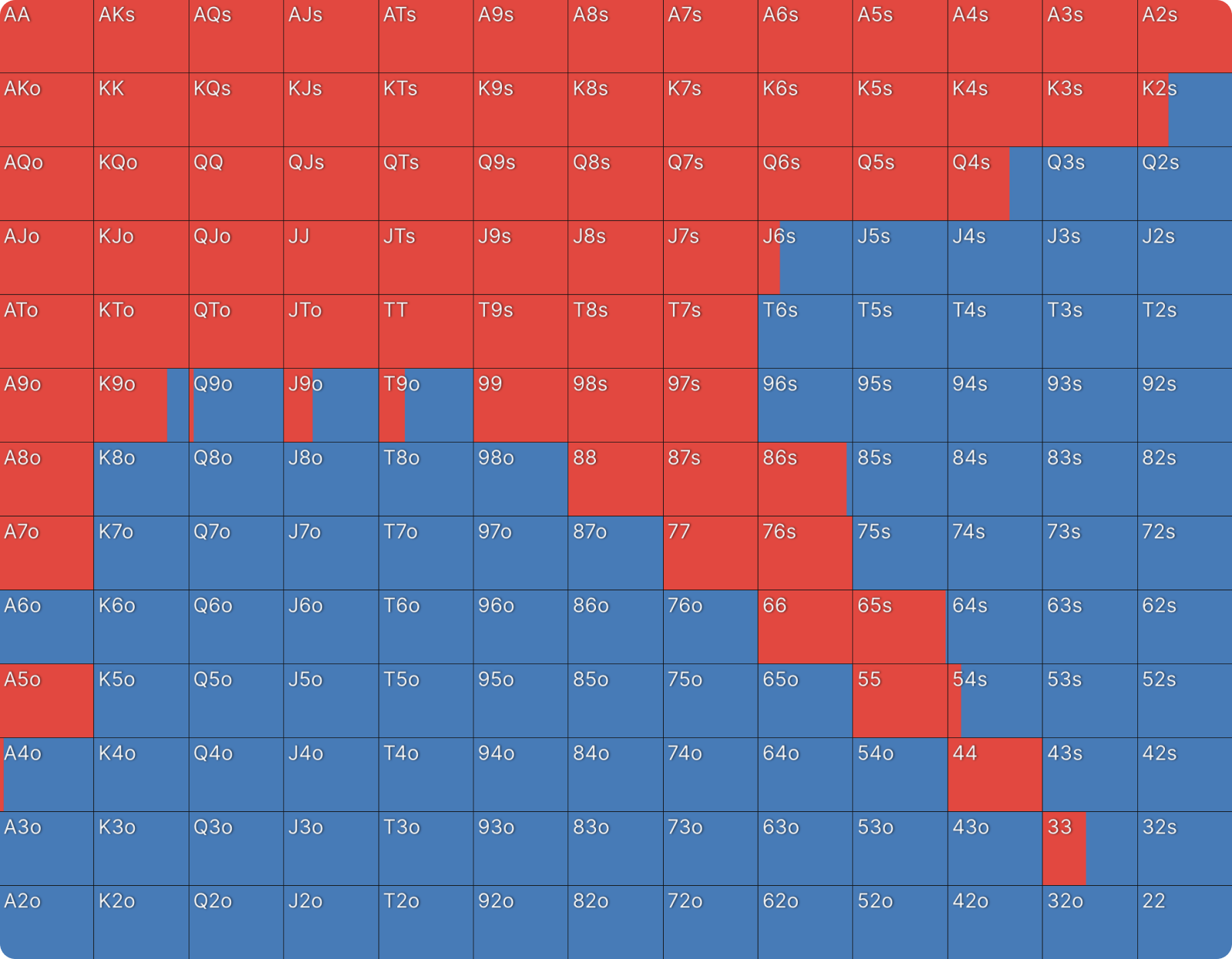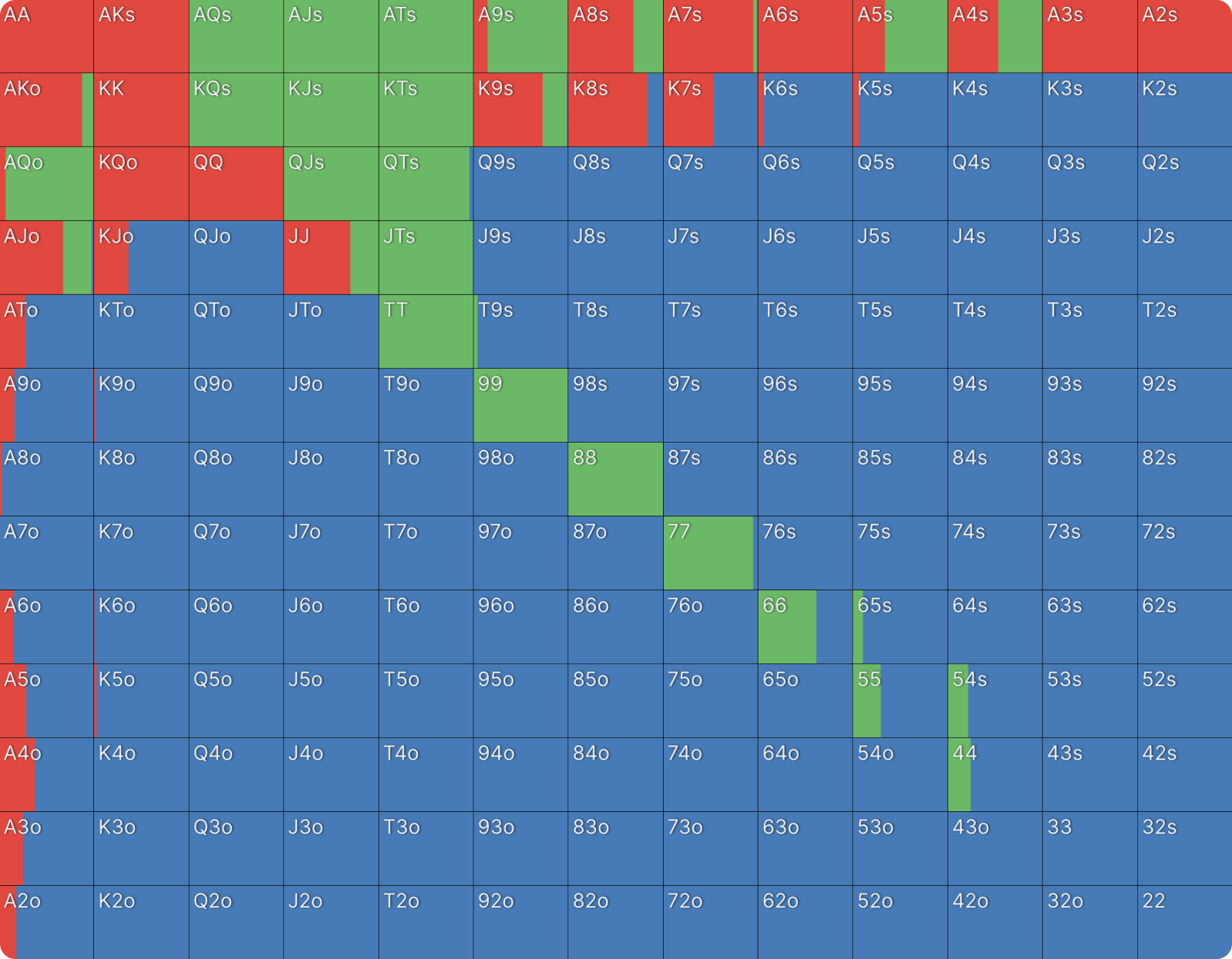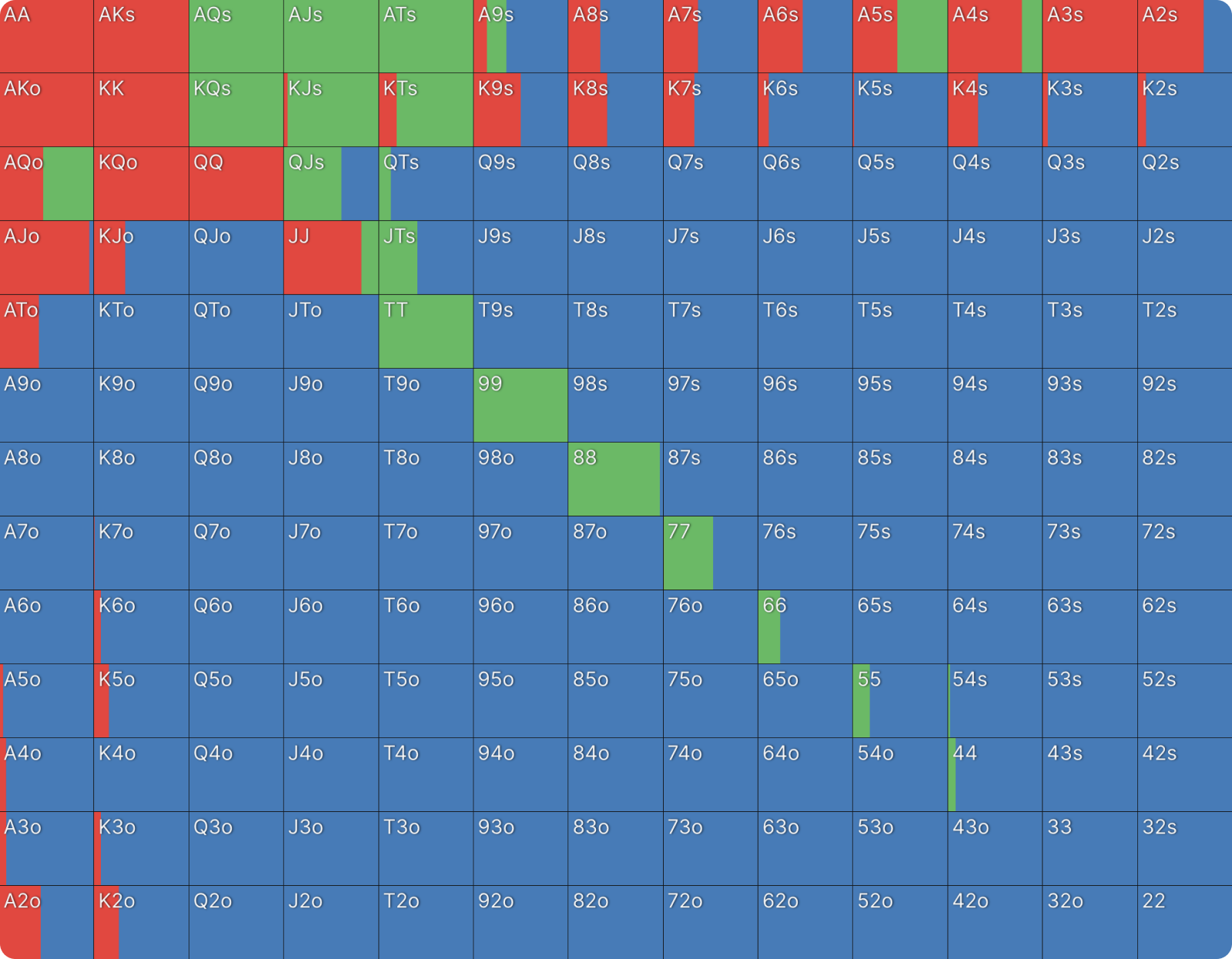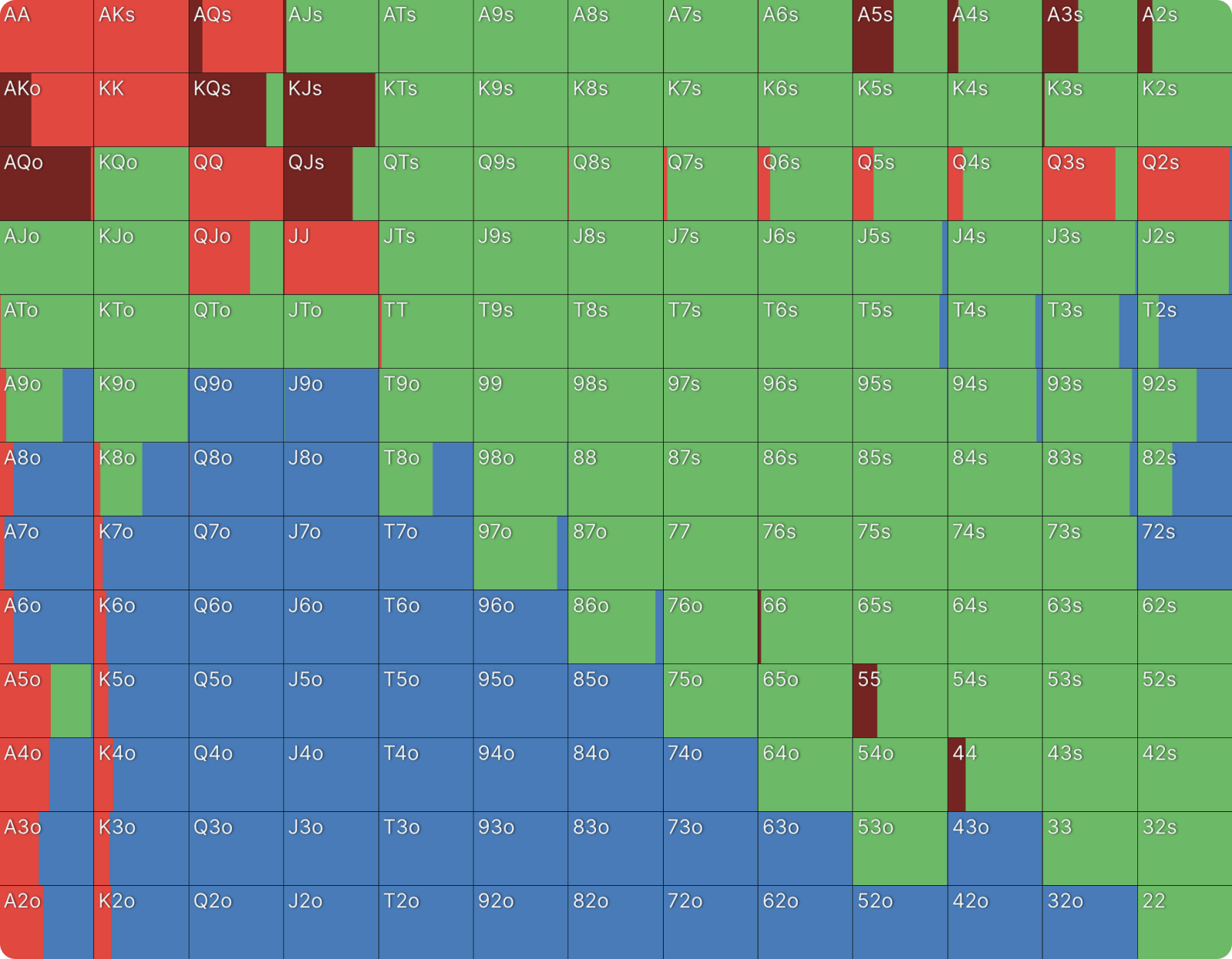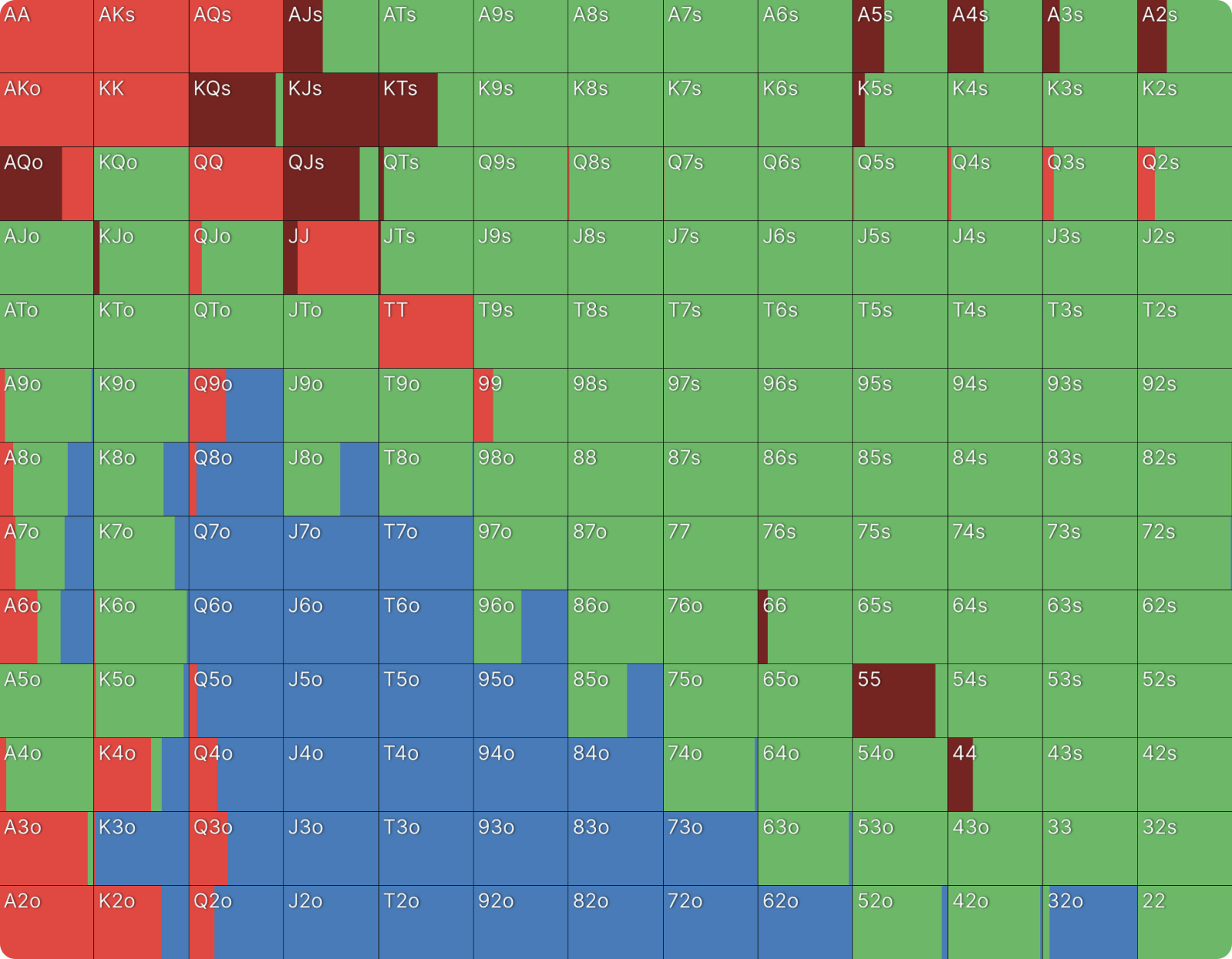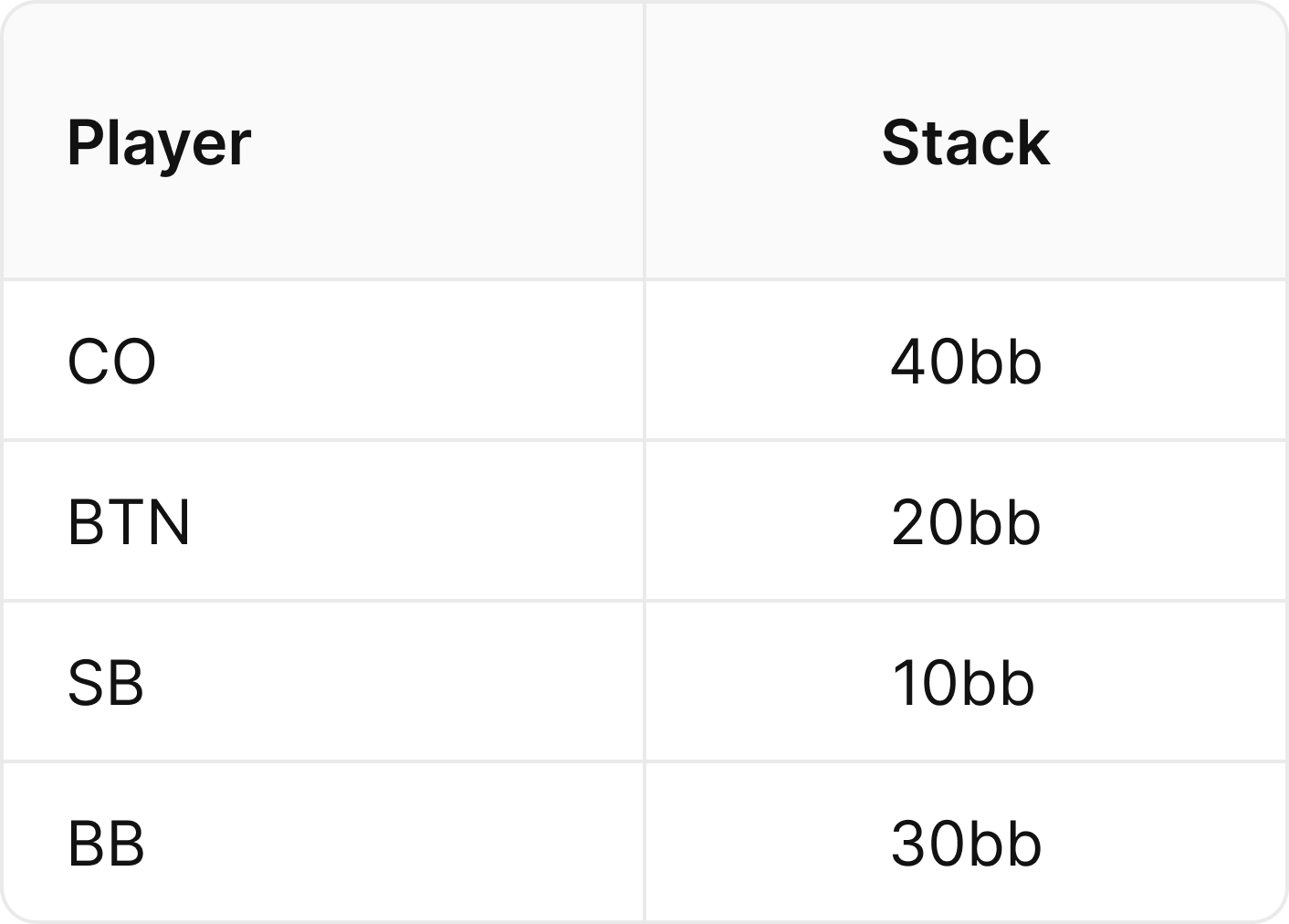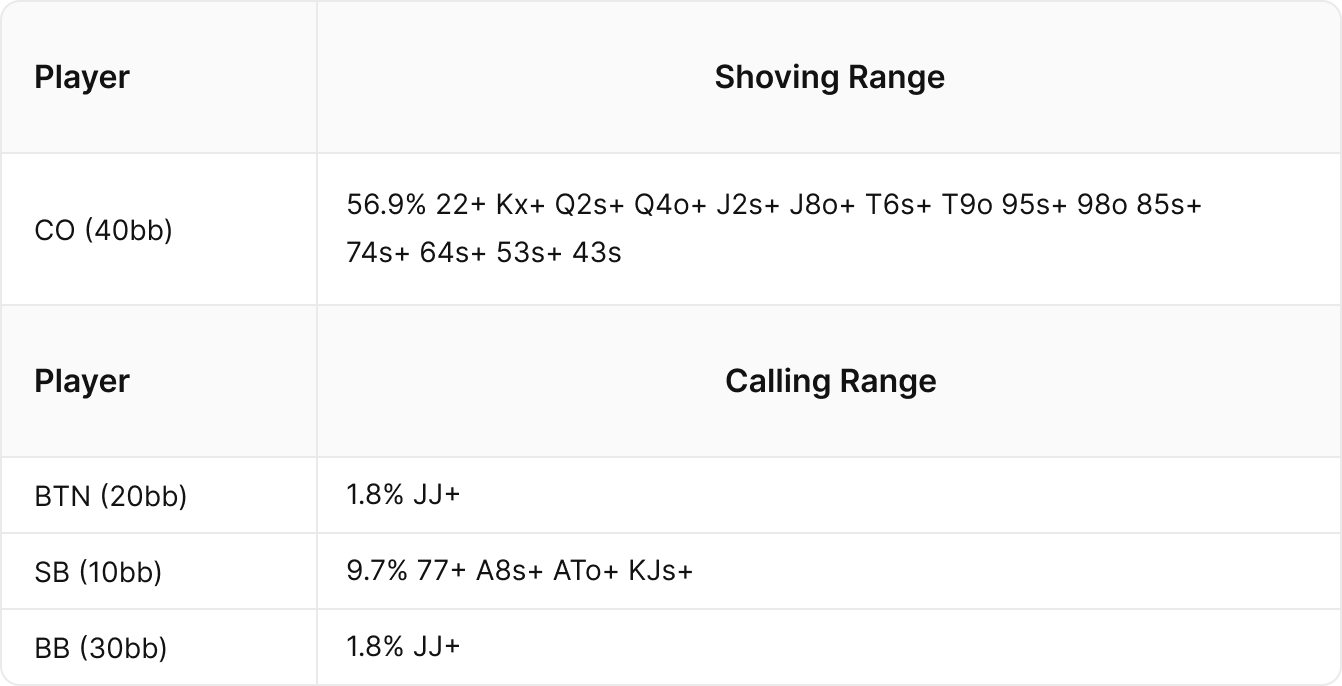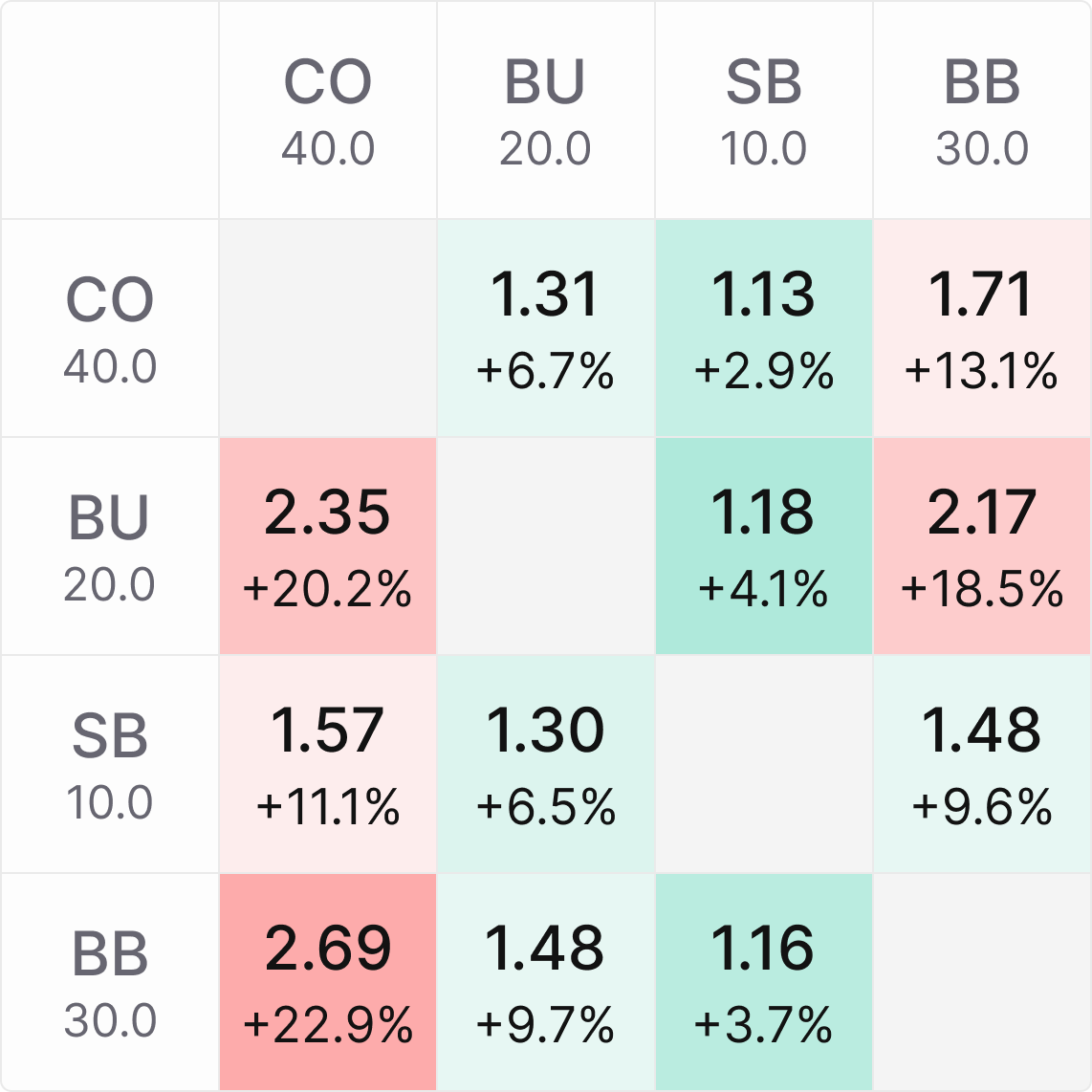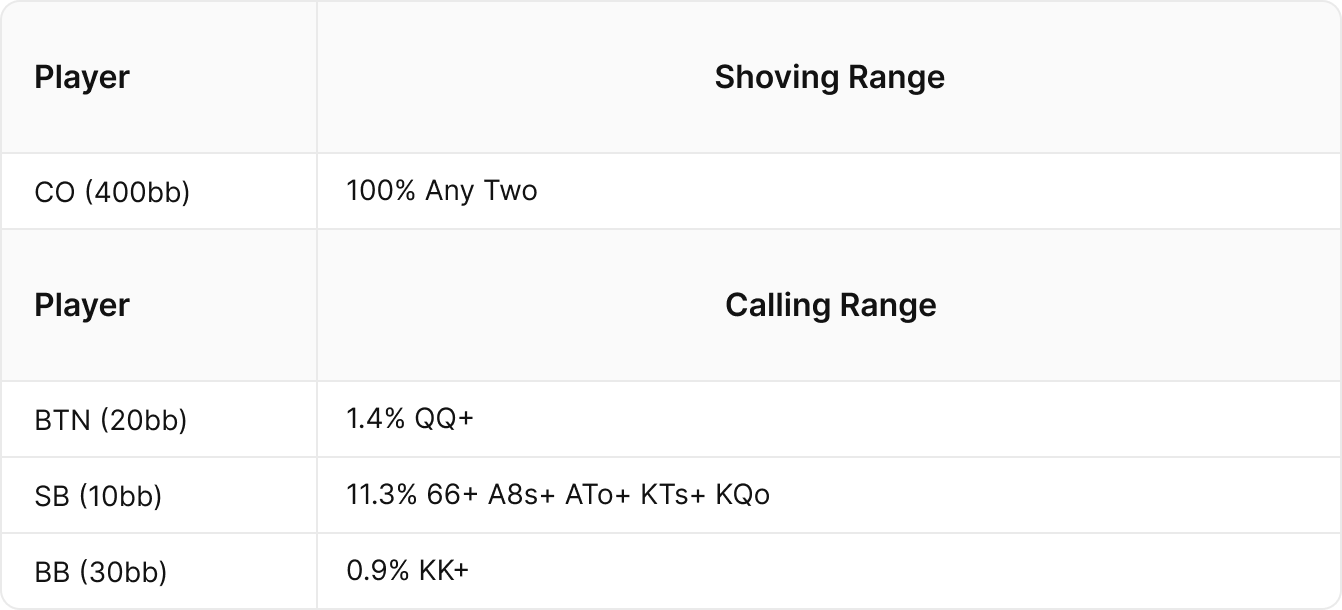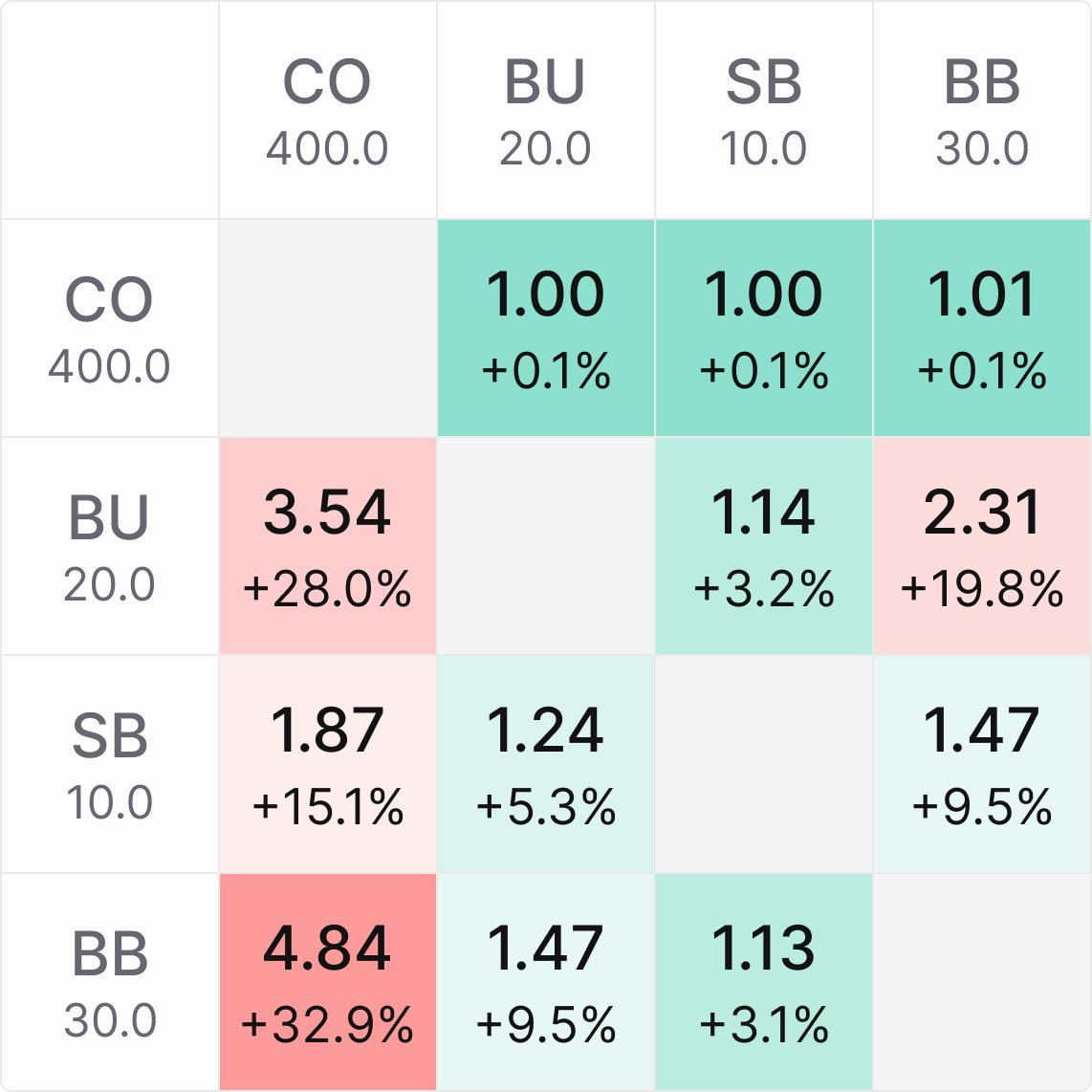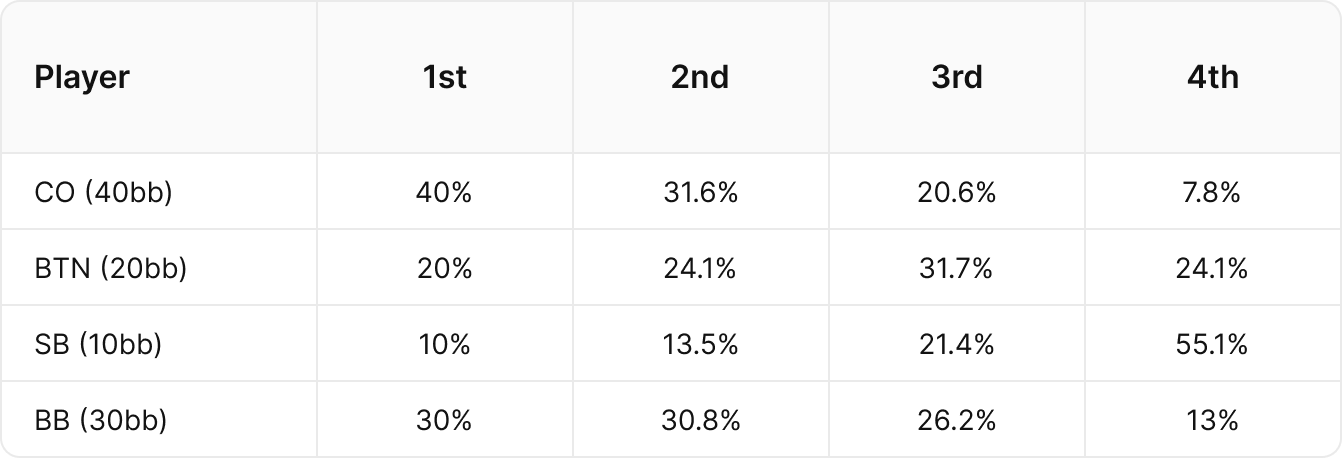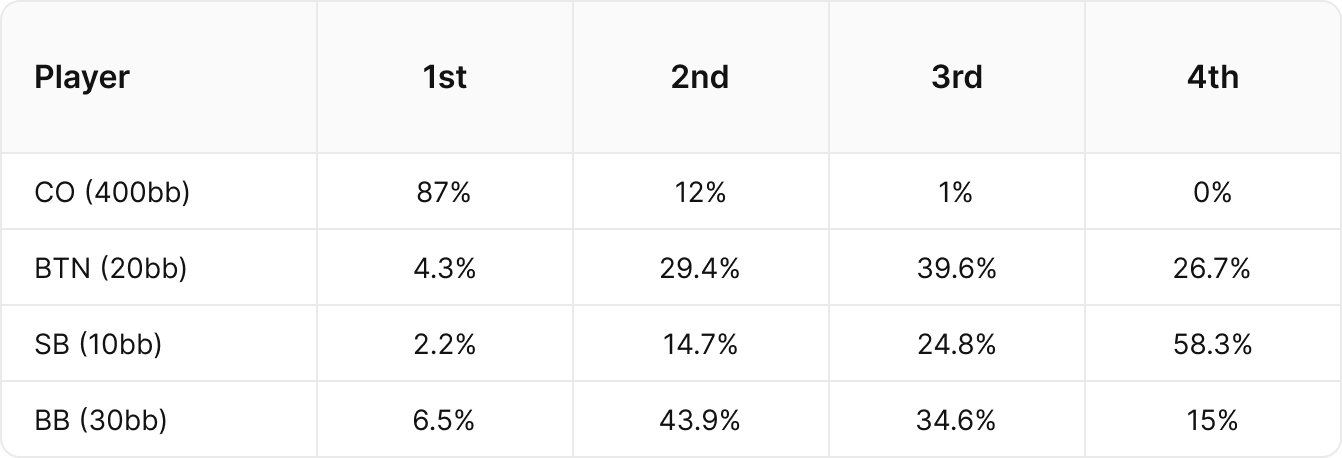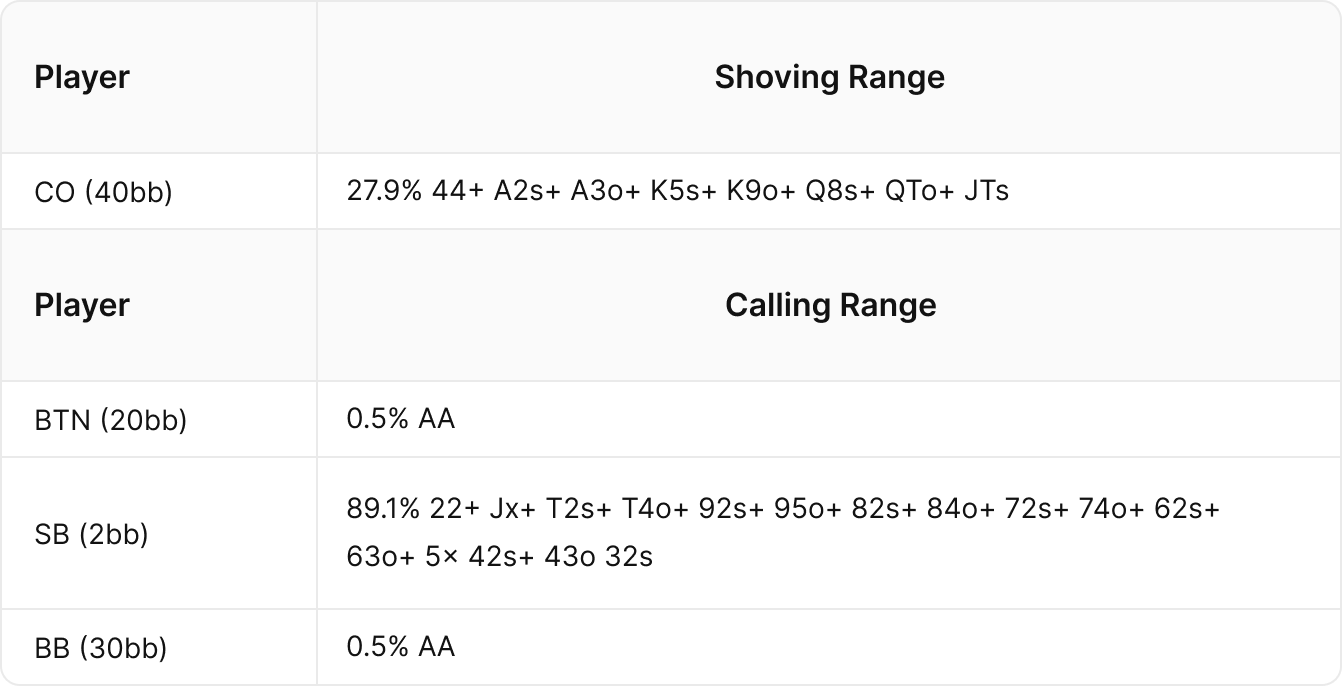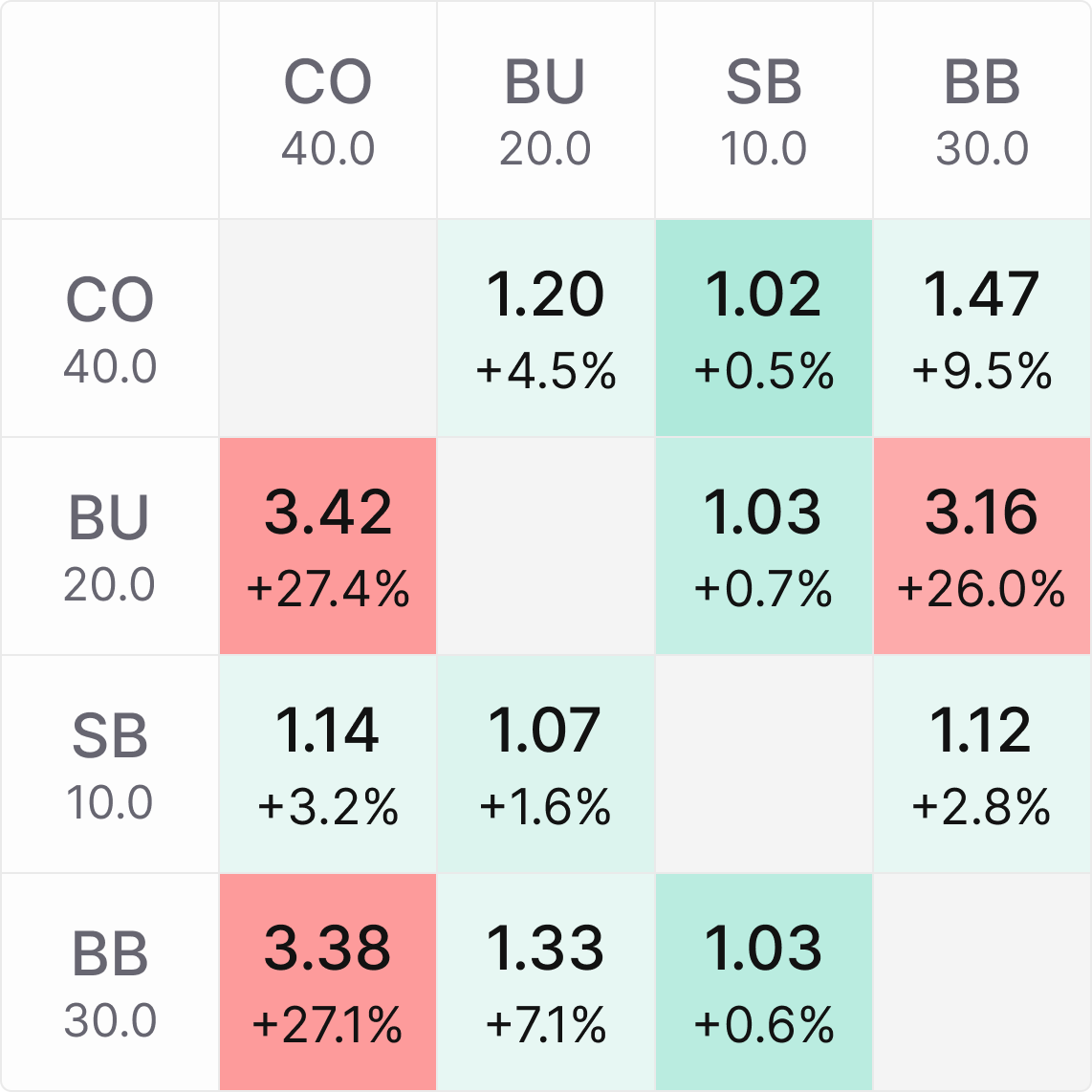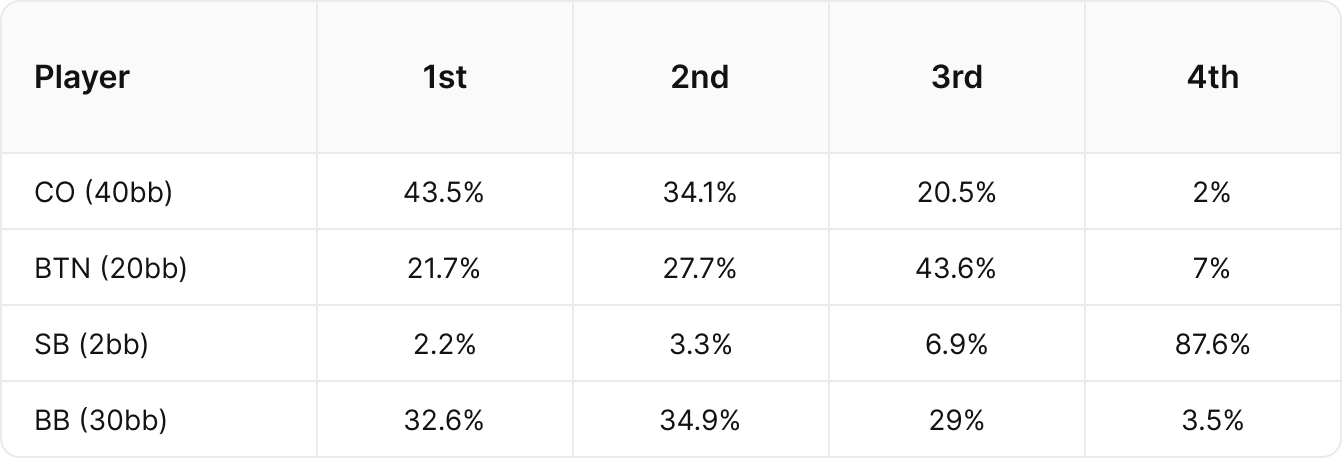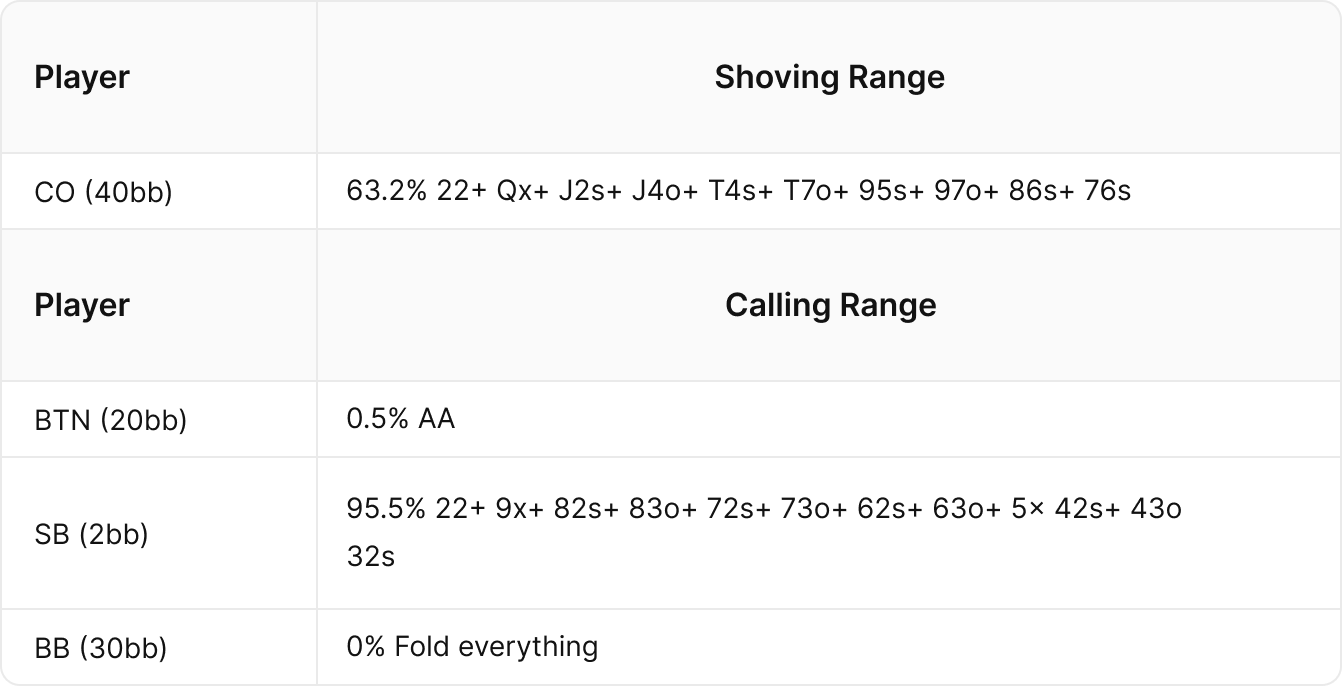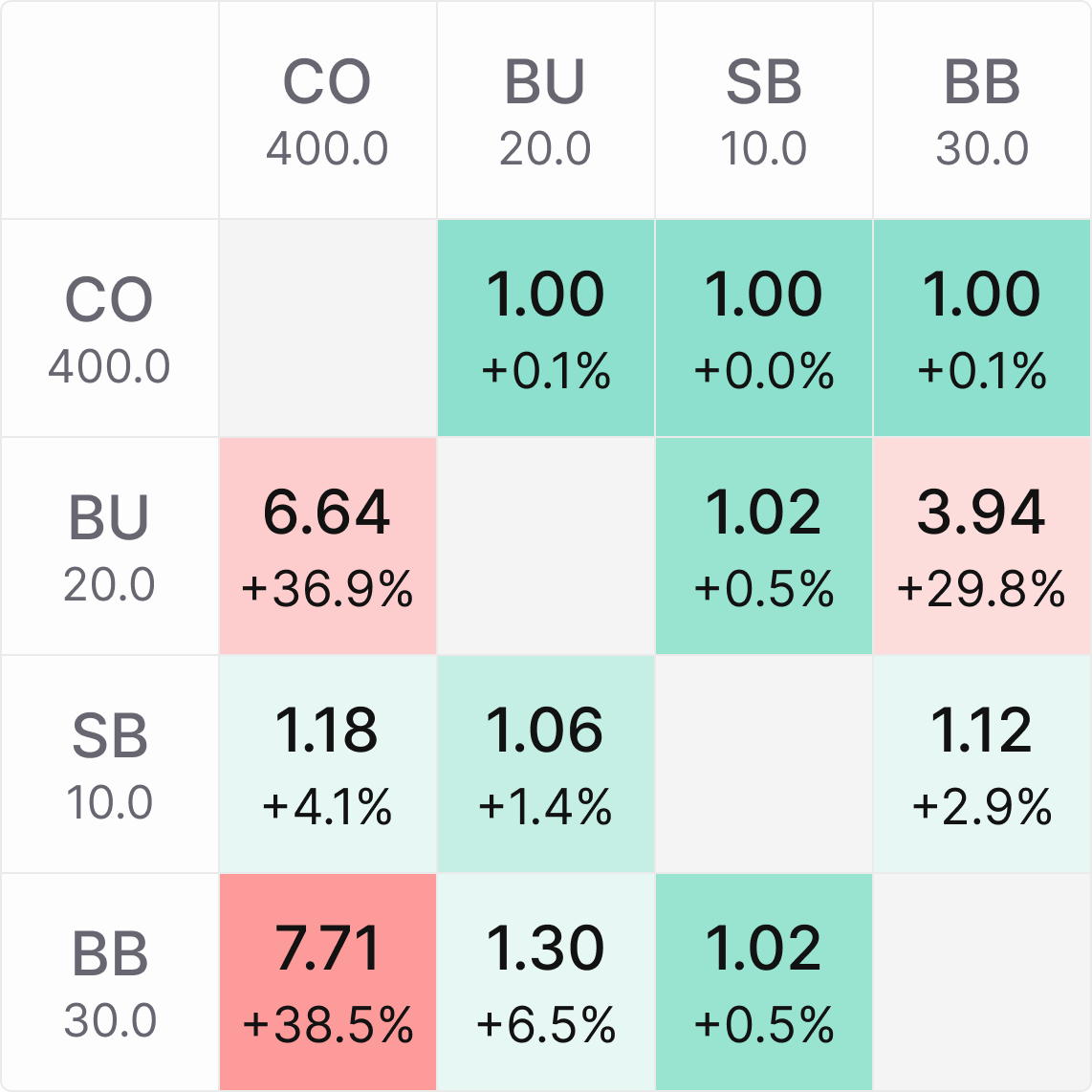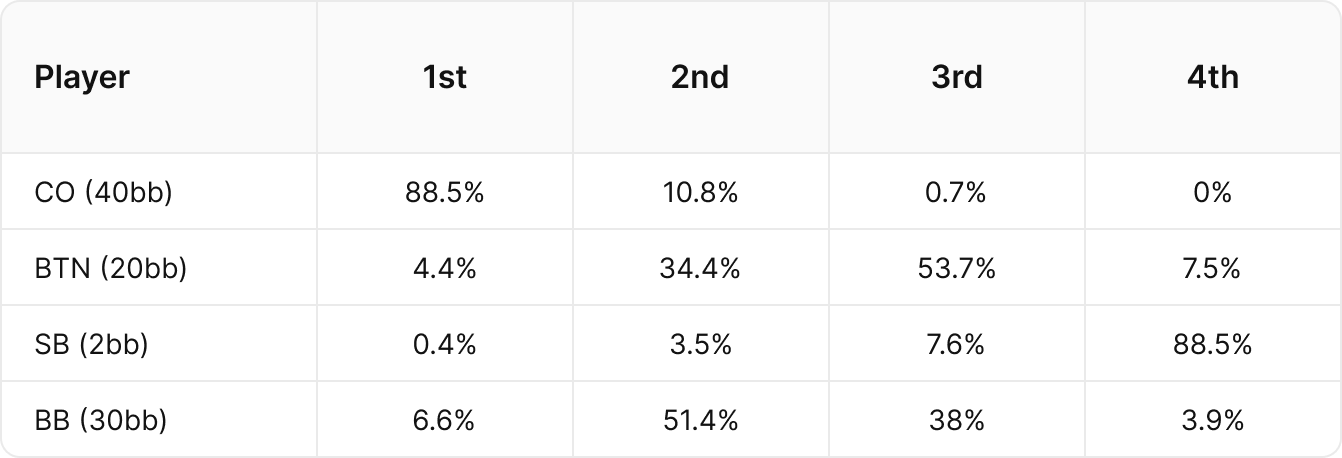When To Ladder in Tournaments
How Mega or Micro-Stacks Distort ICM Strategy

In my last two articles, I wrote about the effect field size and payout structure have on ICM. There is another factor outside of your control that I wanted to discuss that significantly changes your strategy in endgame spots, and that is the stack size of the other players in the tournament. Not the effective stack size of your opponent in the hand, I’m referring to the impact some outlier stack sizes can have, even when they are not involved in the hand. It can even be players on another table.
In particular, the presence of a micro-stack or a mega-stack in the tournament, when ICM is significant and the field is getting smaller, can dramatically impact your strategy.
There is being covered, then there is being really covered.
We can look at a spot in the GTO Wizard that highlights this.
In this example, the average stack is 40bb, and we are near the bubble:
We have selected an example where the stacks are near each other in size. This is CO’s opening range. Note that BB covers us by just a few chips.
Now, let’s look at a very similar spot. This is also a 40bb average near the bubble, but the stacks are a bit more widely distributed:
The CO has virtually the same stack in this example and is once again opening into a BB who covers him. However, the BB has 100bb this time, not 52. The CO also covers the two players next to act, just like in the first example. This is his opening range:
It is much tighter. On the surface, everything is the same. The CO covers the BTN and SB, but is covered by the BB. It is the bubble, meaning losing an all-in to the BB would eliminate the CO from the tournament.
Let’s rewind one step. In both examples, the LJ has around 30bb. When the LJ opens (it’s a similar range in both examples), the CO responds like this in the first example:
However, CO responds like this when the BB has a mega stack:
When the BB has a huge stack, the CO plays more cautiously. They play fewer hands and they flat call much less often. To see why that is, let’s look at how the BB responds when the CO does call. First when they have 52bb:
Then, when BB has 100bb:
The BB plays a lot more hands when they have a mega stack, and also squeeze a decent amount more. This is why the CO flat calls less often when they do play, they do not want to encourage the BB to come along. In both examples, we (roughly) have a 30BB LJ, a 50BB CO, and a BB that covers them both, on the bubble. On paper that seems like an identical spot, so why are the strategies so different?
You may have already guessed that the bigger the chip lead, the more ICM pressure a player can exert.
In the 52BB example, the BB would be almost as hurt as the CO would if they lost an all-in, so they have to proceed cautiously. Having a mega stack, where you can lose an all-in and still cover most of the table, means you can be a lot more cavalier with your chips (remember a tenet of ICM is that the more chips you have, the less each one is worth).
Another ICM impact when one player has a huge stack is that, for the other players, winning the tournament becomes less likely. Laddering and avoiding bubbling, therefore, becomes more important. This may sound defeatist, but taking on the big stack is often ICM suicide. It’s often more prudent to stay out of the way and let them keep busting people for you, to help you ladder.
Finally, and you may not have spotted this, but while the average stack in both examples was 40bb, there were also more short stacks in the second example. Not only does the presence of the mega stack make us play tighter, but the presence of short stacks, who would likely bust ahead of us, paradoxically also makes us play tighter.
Not only does the presence of the mega stack make us play tighter, but the presence of short stacks, who would likely bust ahead of us, paradoxically also makes us play tighter.
The Impact of Mega Stacks

Let’s look at a Toy Game example to highlight the impact of a mega stack at the table. This is the bubble of a 9-man SNG with $50/$30/$20 payouts. The stacks are as follows:
In this Toy Game where the players are only allowed to shove or fold, these would be the GTO ranges for the CO to shove, followed by the calling ranges for the other players, assuming the previous players had folded:
The CO gets to shove very wide because this is the bubble and they cover everyone. The calling ranges are very tight for the BTN and BB because they are close to guaranteed to win a seat. Both of them can only call with JJ+, and AK is a fold here (A quick note worth internalizing: medium to high pocket pairs like JJ hold up much better against wide ranges than strong Ax hands). The SB can get it in fairly wide because they are almost guaranteed to bust if they do not make a move, and taking on the chip leader who will have the widest range is their best chance to double up.
This is represented in the Bubble Factors; the BB has the highest Bubble Factor against the CO, because he has the most to lose. The SB, however, has a very low Bubble Factor of 1.13.
Let’s keep all the factors the same, but this time we will give the CO 400bb, instead of 40bb. Nothing else has changed; the same players are covered by the same players, but one player has a massive lead. These are the new ranges:
The first thing to note is that the CO has almost doubled their shoving range. It was already wide, but now they can shove any two cards profitably. There is no risk of bubbling for this player, even if they lose several flips in a row, so they can shove with impunity.
The calling ranges for the BTN and BB have gotten tighter, now the BB needs at least KK to call. For some reason, which we shall get to in a moment, bubbling is worse for the BB and BTN if the chip leader has a bigger overall lead.
The SB, however, gets to go a little wider. They are still in the same position of needing to make a move, but the CO has gone so wide that the SB has more profitable calls. Notice the negative correlation between how wide the CO can shove, and how wide the SB can call. The CO can shove almost twice as many hands, in response the SB only increases their range by 16%.
These are the new Bubble Factors:
The two things to notice are first that the CO has a Bubble Factor of essentially 1 against everybody, meaning there is no ICM pressure on them at all. The BB, however, has seen their Bubble Factor almost double against the CO.
Finish Distributions
Why is it that bubbling is so much more of a disaster when the chip leader has a huge lead, compared to a small lead? Why do we have to play so much tighter against them? We can answer that by looking at the (ICM-estimated) finishing distributions.
An ICM calculation is essentially a breakdown of the odds of every remaining player finishing in every single position.
These are the finishing distributions for our first example when the CO had 40bb:
As you can see, the chance each player has of winning the tournament is their percentage of total chips in play. The CO has 40% of the chips in play, so they have a 40% chance of winning. The SB has 10% of the chips in play, so they have a 10% chance of winning.
After that, it gets more complex. The SB bubbles this tournament 55.1% of the time, which is why they have to make a move to avoid blinding out. The BB makes the money 87% of the time. This is all assuming equal skill, which ICM does.
Compare that to the finish distributions when the CO has 400 bb:
The CO wins the tournament 87% of the time, they are so dominant they could probably lock up a better-than-first-place final table deal. They are so locked up, in fact, that their chance of bubbling is 0%. Look at the BB. In the first example, they won the whole tournament 30% of the time and bubbled 13% of the time. Now they only win the tournament 6.5% of the time and they bubble 15% of the time.
This is why the strategy shifts considerably. The presence of a mega stack dramatically reduces the chances of the other players winning the tournament. So much so the more profitable thing those players can do is to play for 2nd place. That often means playing very tight and even blinding out, hoping the other players bust because they have to make a move first.
A reminder that ICM guides us on the most profitable decision, not the decision that means we win the tournament the most often.
When we are at such a handicap where chips are concerned, the most profitable thing we can do is play for 2nd.
The Impact of Micro Stacks

We have looked at what a mega stack at the table does for our decisions. What about the opposite?
In this example, we have returned to the CO having 40bb, but we have given the SB just 2bb. These are the new ranges:
The CO is much tighter this time. This is in part because it would be an ICM disaster if they got called and lost to the BTN or BB, but it is mostly because the SB is forced to call so wide. They can call almost any two cards because they are so short and are getting such a good price on the call.
The BTN or BB has been forced to go even tighter, however. Now, the only hand they can call with is AA, and they even have to fold KK!
Once again, here are the Bubble Factors:
When the chip leader has a massive stack, the medium stacks have to play tighter. When the short stack has a micro stack, the same players must still play tighter. Why is it that a micro or mega stack has the same impact on a medium stack’s strategy?
Again, let’s look at the finishing distributions:
In this example, the BB has a decent shot of winning the whole tournament, so one would think playing for the win would be a good strategy. Look at the chances of each player bubbling. The SB bubbles 87.6% of the time, and the BB bubbles just 3.5% of the time. The BB has a good chance of winning but, more importantly, they get a money payout 96.5% of the time. Throwing that away would be a disaster. You would literally be handing equity to the SB if you took a stand against the CO with an inferior hand (which, in this situation, would include KK).
In the 400bb example, the chances of winning the tournament are so low, that the most profitable thing you can do as the BB is to play for 2nd. In this example, the chances of bubbling are so low that the BB should avoid it at all costs. The correct strategy here is to play tight, secure the mincash, then play for the win.
Interestingly, the BB calling range gets wider when the SB calls the shove. They can call with this range:
3.8% TT+ AQs AKo
This is because the BB has an excellent chance of not bubbling now that the SB has committed all-in. If they beat the CO, they at least get a nice double-up; if they beat both players, they more than double up and make the money. If they beat the SB but not the CO, the SB bubbles, and the BB busts with third-place money. If the CO has the best hand and SB has the 2nd best hand, the SB still bubbles and the BB still gets third place money, because they started with more chips.
It’s only when the CO beats the BB and the SB beats everyone, that the BB bubbles the tournament.

Interestingly, the BB calling range gets wider when the SB calls the shove. They can call with this range:
3.8% TT+ AQs AKo
This is because the BB has an excellent chance of not bubbling now that the SB has committed all-in. If they beat the CO, they at least get a nice double-up; if they beat both players, they more than double up and make the money. If they beat the SB but not the CO, the SB bubbles, and the BB busts with third-place money. If the CO has the best hand and SB has the 2nd best hand, the SB still bubbles and the BB still gets third place money, because they started with more chips.
It’s only when the CO beats the BB and the SB beats everyone, that the BB bubbles the tournament.
This sums up why the correct strategy is to tighten up whether it is a mega or micro stack at the table. The BB is only 6.6% to win and only 3.9% to bubble. Both of those results are outliers. The BB is 89.4% to come 2nd or 3rd, plus they come 2nd more than half the time, which looks quite appealing right now.
With ICM guiding us, the most profitable thing we can do against outlier stacks is to avoid bubbling, ladder when we make the money, and then pray we get lucky heads-up.
Conclusion
An ICM calculation looks at the chances of each player finishing in each position and then guides the strategy accordingly. The presence of a micro or mega stack at the table creates a degree of certainty about which position some players will finish.
The mega stack will almost certainly win, and the micro stack will almost certainly bust next. ICM will always guide us to make the most profitable decision, not the trophy-seeking decision, so the correct strategy for those with middling stack sizes is to let the inevitable happen. Let the micro stack bust before we try to spin it up, or play for 2nd when the chip leader is unstoppable.
The outlier stack doesn’t even have to be involved in the current hand or be at your current table. It is quite often the case, for example, that a player with just an ante dictates the action on an adjacent satellite table.
It’s not the most glamorous strategic adjustment you can make in poker, but playing tight when an outlier stack is at your table is the most profitable course of action. The flip side is that you get to play like it’s your last day on Earth when you are the one with the outlier stack.
Author
Barry Carter
Barry Carter has been a poker writer for 16 years. He is the co-author of six poker books, including The Mental Game of Poker, Endgame Poker Strategy: The ICM Book, and GTO Poker Simplified.
